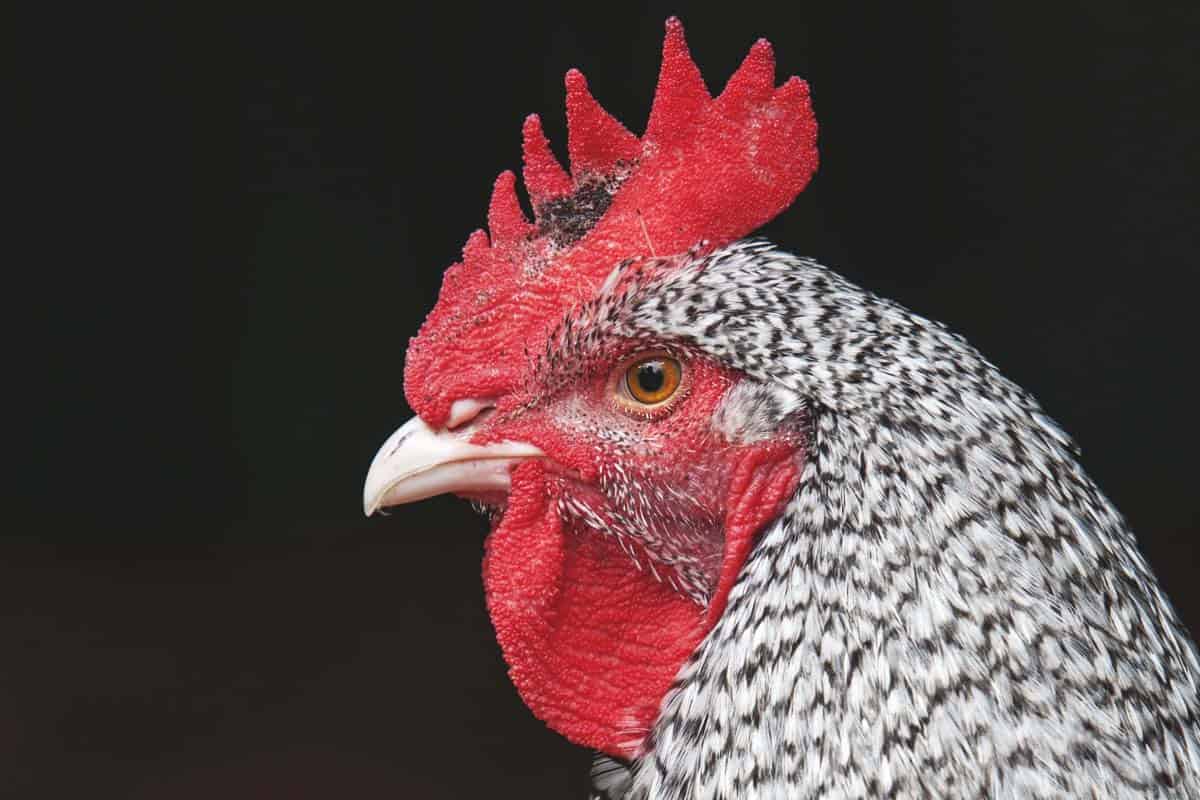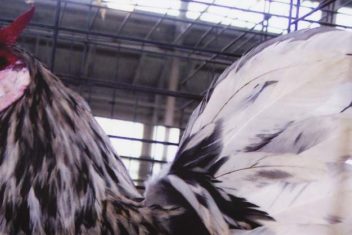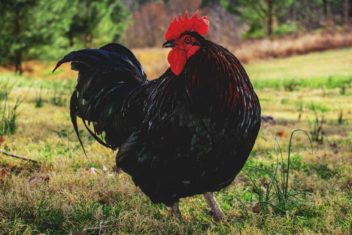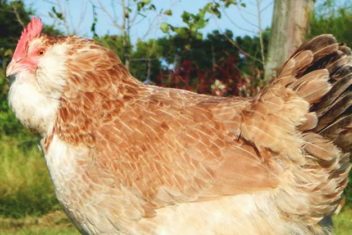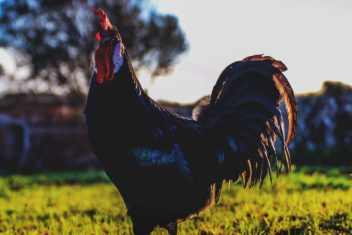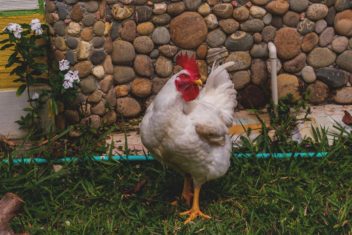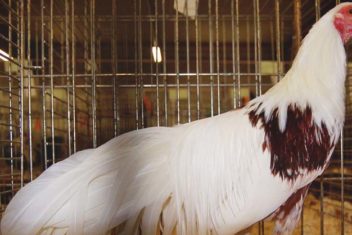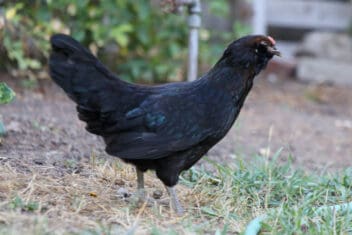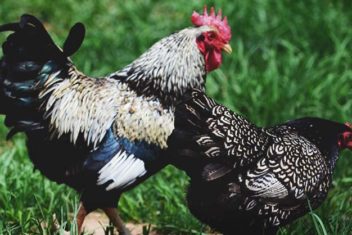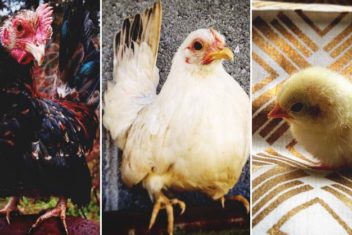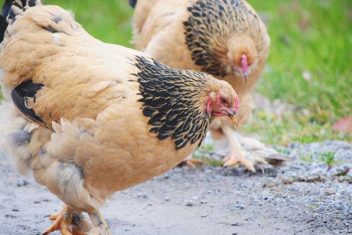If you’ve ever seen the slightly more common Plymouth Rock, Holland chickens won’t look too unfamiliar to you. Despite many similarities to both Dominique and Barred Rock chickens, Hollands have some defining traits that make them a useful and desirable breed.
Despite having some practical attributes that make this a very good bird for sustainable farms, Hollands are critically endangered.
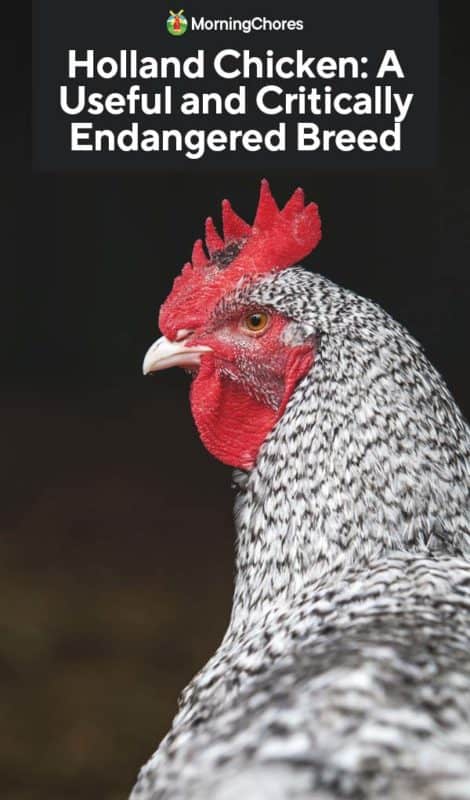
About Holland Chickens
Hollands were bred in New Jersey and were formulated with the main intention of a dual-purpose, white-egg-laying breed. A large part of the breeding stock for this chicken was imported from Holland, giving the breed its name. Hollands were bred using Leghorns, Australorps, and Rhode Island Reds just to name a few of the breeds that went into the chicken we have today.
There are two color variations for this chicken, the White and the Barred Holland, both recognized by the American Poultry Association in 1949. Unfortunately, the White Holland has largely died out due to lack of popularity.
Breed Characteristics
1. Size and Weight
Hollands were bred to be large chickens to satisfy the demand for both meat and eggs, as dual-purpose breeds were very popular in the 1900s. A full-grown Holland rooster weighs about 8.5 pounds. Hens of this breed generally tip the scales at 6.5 pounds.
2. Temperament
Another very desirable trait of the Holland is their calm and sweet dispositions. Hens will go broody on occasion, but if you’re after a reliably broody chicken, look into a breed such as Silkies.
3. Egg Production
Egg production from this breed is actually not too bad, averaging 3-4 eggs a week per hen. Hollands were bred to lay large white eggs because, at the time, white eggs were considered to be a delicacy.
4. Meat Production
Meat production from Hollands is not the same you can expect from a chicken bred solely for meat purposes, but it’s fairly decent. Roosters will produce larger carcasses with more meat on them, making this a nice use for extra roosters if you buy straight run.
Caring for Holland Chickens
1. Feeding and Nutrition
Holland chicks will need to be fed chick starter for the first 8-12 weeks of their life. As your growing birds enter adulthood, it’s time to transition them to a quality laying feed so they can prepare for egg production.
Occasionally, laying feed won’t provide quite enough calcium a hen needs to produce strong eggshells. If you find yourself with brittle or soft eggshells, you can supplement calcium to strengthen eggshells. Crushed eggshells or oyster shells can be fed separately to add some extra calcium to your hen’s diet.
2. Housing and Fencing
Every chicken needs a safe and secure place to go up to sleep unless you want to come out in the morning to find a mass murder scene. Inside your coop, it’s best to provide 4 square feet per chicken to ensure everyone has plenty of space.
Outside, Hollands are exceptional foragers and will supplement a large part of their diet if they have access to plenty of space to range. If you don’t have space to allow your birds to free-range, their run needs a minimum of 10 square feet per chicken.
3. Health Issues and Care
The Holland is a robust and hardy breed that doesn’t have any specific susceptibilities to illness. However, any chicken can get sick, so keeping a close eye out for signs of illness such as lethargy, sneezing, and runny eyes or nose will go a long way in catching issues before they get out of hand.
Internal and external parasites are a real problem among poultry. Such issues will need to be dealt with immediately when discovered. Providing a dust bath for your birds will be an excellent preventive measure in keeping mites and lice at bay.
While Hollands do well in cold environments, roosters with especially large combs may be subject to frostbite. Take care to prevent such issues and if you live in a particularly frigid area, you may consider a bird with a smaller comb.
4. Breeding
Hollands are in desperate need of passionate breeders that will raise the numbers of this breed and save them from extinction. One convenient thing about breeding Hollands is their white eggshells. Light eggshells make it very easy to candle eggs and check for development.
Breed Alternatives
1. Plymouth Rocks
Plymouth Rocks are in many ways, very similar to Holland chickens. Production is a little bit better from the Plymouth Rock than Hollands. Egg color from Plymouth Rocks is brown instead of white, and both breeds share the same sweet personality.
Did You Know?
According to the Livestock Conservancy, Hollands may be the rarest breed of chicken still alive today. This is a chicken that could certainly use some farmers that enjoy dual-purpose, self-sustainable chickens. Some proud ambassadors would go a long way in boosting this breed’s popularity.
It’s certainly puzzling how a breed with such practical uses generally sought after by many a farmer has declined so vastly. Every homesteader needs to add a few of these chickens to their flock and help improve their popularity.
